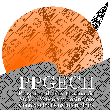Banca de DEFESA: SANDRA HAKUWI KUADY
Uma banca de DEFESA de MESTRADO foi cadastrada pelo programa.DISCENTE : SANDRA HAKUWI KUADY
DATA : 21/05/2025
HORA: 14:00
LOCAL: https://meet.google.com/zce-kywx-eni?authuser=0
TÍTULO:
Iny Graphics: body painting and rituals as pedagogical processes
PALAVRAS-CHAVES:
Indigenous Education. Indigenous Culture. Iny (Karajá) people.
PÁGINAS: 100
GRANDE ÁREA: Lingüística, Letras e Artes
ÁREA: Artes
SUBÁREA: Artes Plásticas
ESPECIALIDADE: Pintura
RESUMO:
It is important and necessary that young people and students in the school community preserve, revitalize and maintain their ancestral culture of body painting, the graphics of the Iny Karajá people. Therefore, the objective of this research is to study and describe the graphics and body paintings and rituals of the culture of the Iny Karajá people. The use of body painting in the indigenous society of the Iny people is very important. The graphics are used during the traditional cultural festival, in all the rituals and festivities of the Inymahadu people (Iny people). Painting on some part of the body is an identification of the indigenous Iny people. Originally, the Iny people use graphics in their daily lives, mainly in the ceremonial festivals and rituals held in the village (Krehawa). On the day of the ritual of passage from boyhood to adolescence, the boys, mothers, aunts or uncles would paint the boys, girls, teenagers and pre-teens with graphic body painting (weryrybo, jyre, bodú, ijadokoma) so that they could dance and sing at the traditional hetohoky festival. The painting represents joy and hope. This is its meaning for the Iny people. Each graphic has its historical meaning, therefore, in the family and at school, teaching graphic art is of utmost importance for the learning of the young Iny, to maintain the family tradition, and to always maintain this work of aligning painting and the graphic art of the Iny people. This research was carried out based on written observation of daily cultural practices, using the auto-ethnographic methodology and has as an educational product the production of a pedagogical notebook that encourages graphic art in indigenous schools.
MEMBROS DA BANCA:
Presidente - 39231003 - CARLOS EDINEI DE OLIVEIRA
Interna - 34875201 - LUCIMAR LUISA FERREIRA
Externa ao Programa - 257877001 - TATIANE SILVA SANTOS



